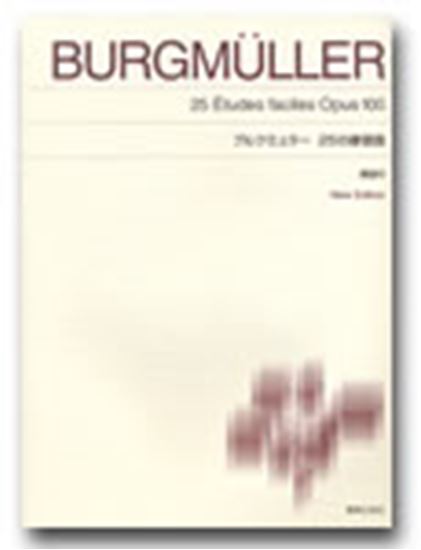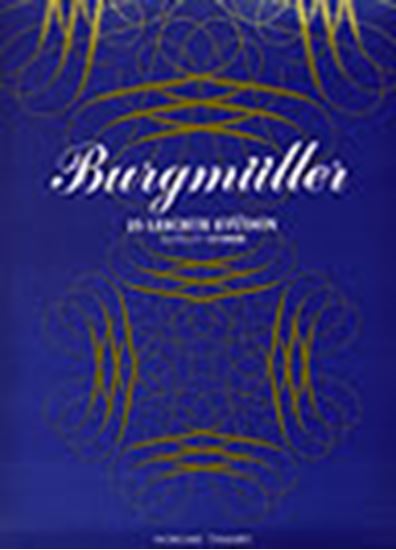Burgmüller, Johann Friedrich Franz : 25 Etudes faciles et progressives, conposées et doigtées expressément pour l'étendue des petites mains Inquietude Op.100-18
Work Overview
Genre:etude
Total Playing Time:1 min 00 sec
Copyright:Public Domain
Additional Notes:表記ゆれの例: 不安 気がかり
Commentary (3)
Author : Sato, Takashi
Last Updated: January 31, 2022
[Open]
Author : Sato, Takashi
Inquiétude refers to a state of restlessness or agitation. The expressive marking that perfectly describes this state is “agitato.” In the sequel, 18 Etudes, the 8th piece is explicitly titled “Agitato,” so please refer to it. Both pieces are written in E minor. What kind of anxieties might be present? One should aim to play it as if it ends in an instant.
Performance Points (Original Tempo ♩=138)
The defining characteristic of “agitato” is the rhythmic bite of the right hand. As shown in the musical example, try practicing the rhythm by isolating only the first note of the left and right hands. Figurations involving leaps, such as in measures 5 and 6, should be played with a little more expression. The staccato chords in the left hand should be played with a light touch, as if lifting the hand rather than pressing it down. Conversely, the single-note bass line from measure 24 (2nd bracket) should be played with weight.
(From To-on Edition “Burgmüller 25 Etudes” (NS70))
Author : Iida, Arisa
Last Updated: March 15, 2018
[Open]
Author : Iida, Arisa
Musical example provided by: Ongaku no Tomo Sha
Author : Ooi, Kazurou
Last Updated: May 10, 2019
[Open]
Author : Ooi, Kazurou
In agitato pieces, the downbeat often consists of rests (e.g., Chopin Op. 10-9, Liszt Transcendental Etude No. 10). In this piece too, the downbeat has rests, and you should consider that not emphasizing the beginning of the first beat will lead to an agitato performance.
This piece can be played somewhat like a metronome. Beyond that, be sure to strictly observe the dynamic markings and strive to avoid a flat performance.
For patterns like the opening two measures, two possibilities can be considered. When comparing measures 1 and 2, considering the height of the right hand and the type of chords in the left hand, it is clear that measure 1 is dynamically stronger and measure 2 is weaker. However, there are two possibilities:
- One is to weaken the second beat more than the first beat in measure 1, as if the right-hand melody is descending, and then enter measure 2.
- The other is to focus on the left-hand chords. The chord on the second beat has higher tension. Therefore, the idea is to make the second beat louder than the first beat, and then gradually diminish again in measure 2.
Either approach is acceptable. Please consult thoroughly with your instructor.
Arrangements & Related Works(3)
PTNA & Partner Channel Videos(17items) View More
Sheet MusicView More
Scores List (25)

(株)東音企画(バスティン)

(株)東音企画(バスティン)

(株)東音企画(バスティン)

(株)全音楽譜出版社

(株)ドレミ楽譜出版社

(株)音楽之友社

KMP(ケイ・エム・ピー) ケイエムピー

(株)ドレミ楽譜出版社

ハンナ(ショパン)

(株)ヤマハミュージックエンタテインメントホールディングス

デプロMP

(株)ドレミ楽譜出版社

(株)全音楽譜出版社

(株)ドレミ楽譜出版社

カワイ出版

カワイ出版

デプロMP

(株)ヤマハミュージックエンタテインメントホールディングス

デプロMP

(株)ドレミ楽譜出版社

(株)音楽之友社

(株)共同音楽出版社

Neil A. Kjos Music Company



















